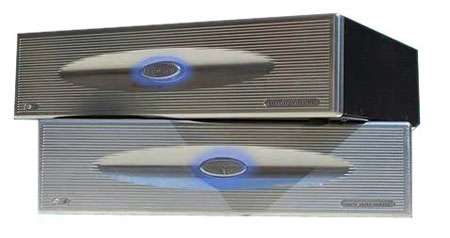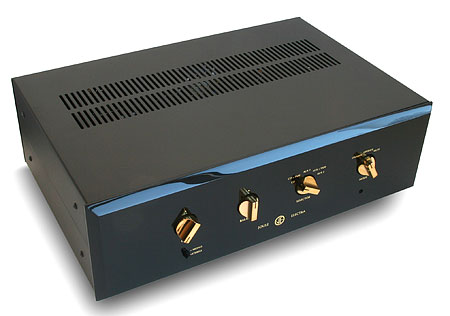|
|
|||||||
You don't need to be an accomplished musician to appreciate great sound/music, but when a former professional musician with 12 years of formal education in classical piano offers his opinions... you read his evaluation with great interest. The late Simon Thatcher, Ph.D. was kind enough to offer an in-depth evaluation of V-Caps in a variety of high-end gear, positions within that gear, and in different stages of burn-in. Simon was an Electrical Engineer with an extensive background in digital electronics, as well as digital signal processing. Simon was also a consulting designer for several Hi-Fi equipment manufacturers, including Joule Electra and Spectron.
Below, are the e-mail remarks Simon shared over a period of several months. "I was able to finally install the 0.1uF CuTF into the signal path of my old preamp. 1) The old cap was Audio Note Silver (I forgot the price - about $200 ea.) 2) The music was solo piano 3) Your CuTF, as cold as it was, "blew" Audio Note in the most important area of all - accuracy of midrange texture. 4) I wrote to you, a while ago, that the CuTF bypass was most accurate in piano reproduction (right hand only) - because it was a bypass, and I was not sure about the lower midrange and down. You added that quote to your website... Today, please remove "(right hand only)", because CuTF is indeed most accurate in piano representation in upper and lower octaves. About 2 months later, Simon sent the following e-mail: I have received my own repaired preamp with your CuTF caps in it. First tested was the 0.1 uF in the signal path, and the second, I purchased (two weeks ago) 0,01 uF to use as a bypass for my output capacitors (2 uF TFTF + 1 uF Mundorf Oil/Silver/Gold - for "better" midrange). After one week of listening to music, yesterday I put my reference discs and I feel I can confidently make my first report. With the bypass caps it's easy - you listen to the highs, maybe the upper midrange, not lower. First, what is coming is .....air, lots and lots and LOTS OF AIR - around instruments, around me, around you, around the world; AIR - without which, I know now for sure we will die !!!! (It's air to die for) - silky and seductive. Sparkling too! With the 0. 1 uF signal path caps, my attention was across the entire spectrum. The midrange is also sparkling, fast, and much more sweet then their predecessor - the Audio Note, Silver 0.1 uF. All the sound is very musical, piano- both right and left hands are spectacular, and the best I've ever heard !!!!!!!!!!!!!!!!!!!!!! The low bass..... oh well, its not there yet, not developed, not burned-in... don't know.... except there is no very low bass yet. You can live with it because overall presentation is MUCH, MUCH improved. I expected this "warmth" but I did not expect this sparkling quality at the top and upper midrange, this speed, tightness of the upper/mid bass... SPECTACULAR. If we leave the question of very low bass to be unresolved, as clearly I did not put the hundreds of hours these caps require - IT'S THE BEST CAP IN THE WORLD. Chris, before I did not have such a "best", so I always had to mix and match (like my output caps). I know other people do not like this approach, they hear discontinuity - and it's there, but I hate false texture more, sometimes it gives me a toothache and headache. My most sincere congratulations !!!!!!!!!!!! The next day, Simon followed up with: I lost and found another page of earlier observations. I listened to music today, and I noticed I missed saying a few things. The other major factors contributing to my appreciation of the CuTF is: 1) Fullness of the sound - Palpability, color saturation, best realism even in symphonic music 2) Micro dynamics: This speed I mentioned in a previous e-mail is mostly observed in rapid changes in dynamics on small scale (thus "micro") ...making it a delicious music presentation 3) Simply more details - I simply forgot to say - just more details. Not a big deal, just MORRRRRRE DETAILS 4) "Magic" - I can't define it and describe it. This cap is "magical" - I loved to be INSIDE music today !!!!!!
A few months later, Simon had a chance to follow-up with impressions of the CuTF V-Caps installed in his Joule Electra LA-300ME: When Jud installed a broken-in 0.1 uF CuTF capacitor as a bypass for output 10 uF OIMP caps in my LA-300ME preamp, the results were immediate and dramatic - sound improved by "miles" in treble and higher midrange. About two-three months ago, Jud installed four 0.22 uF CuTF into signal path of the same preamp. This time the caps were NOT broken in. We wanted to compare them against 0.22 uF Mundorf Gold/Silver/Oil caps (well broken-in by that time). In the very beginning, the CuTF were noticeably worse then Mundorf. Detail, soundstage, imaging etc. After about 100 - 150 hours, these improved but sound became, in one word "boring", not-involving. Today, I have about 400 hours and sound is dramatically different. Most important, it's not 'boring" anymore - if anything, the word "seductive" is more appropriate. Much more transparent; there is much more "there". If you close your eyes, you have increased sensation that the musician/singer is here in your room. The sound is more authentic to acoustic music presentation. This includes texture and bass - everything. No question that V-Cap CuTF cap is significantly more musical and involving then Mundorf Gold/Silver/Oil and thus is "the best capacitor" in the world. One issue is the time for break-in. I've had identical results with broken-in 0.1 uF in my preamp: the results were immediate and spectacular. The CuTF "annihilated" ultra expensive Silver Audio Note cap on the spot, in a fraction of a second (you know the "moment" when jaws starts to drop to the floor with the very few first sonic clues). Also, I experimented using with the Spectron amplifier by using V-Caps for additional filtering of power supplies - the same results. The CuTF is better, but needs extensive break-in. A section will added to the "Installation Notes" page of the V-Cap website in the near future, to shed some light on the burn-in process, as well as a few tips on how to accelerate this process. I asked Simon if he could provide a glimpse into some of the material he listens to, when making critical evaluations. His response is below: Over these months, years and decades, I have listened to a bazzilion CDs, SACDs, XRCD24, HQCD, SHM-CD... Most spectacular are Esoteric remasters SACD - Symphonic and Operatic discs. I like to listen in gestalt fashion i.e. I close my eye and either the music grabs me or not. If it grabs me, then how deep? Later on, I can assess bass, soundstage, etc... The most important to me is being "there" - close my eyes and the musicians are here in the room.... I make my judgments based on the fidelity to authentic acoustic music, particualrly piano. I use, for quick references only, a few CDs: Soundtrack of Gladiator because it has full orchestra, solo Spanish guitar, and rather clear and high octave female voice (Lisa G.... from Dead Can Dance); Reference Recording "Nogima Plays List" - latest 24 bit remastering; and FIM (or JVC) Yamamoto Trio "Midnight Sugar" - the last two have the most authentic piano sound. Simon Thatcher
READ MORE REVIEWS of the V-Cap Capacitors | |||||||
|
|
|||||||

